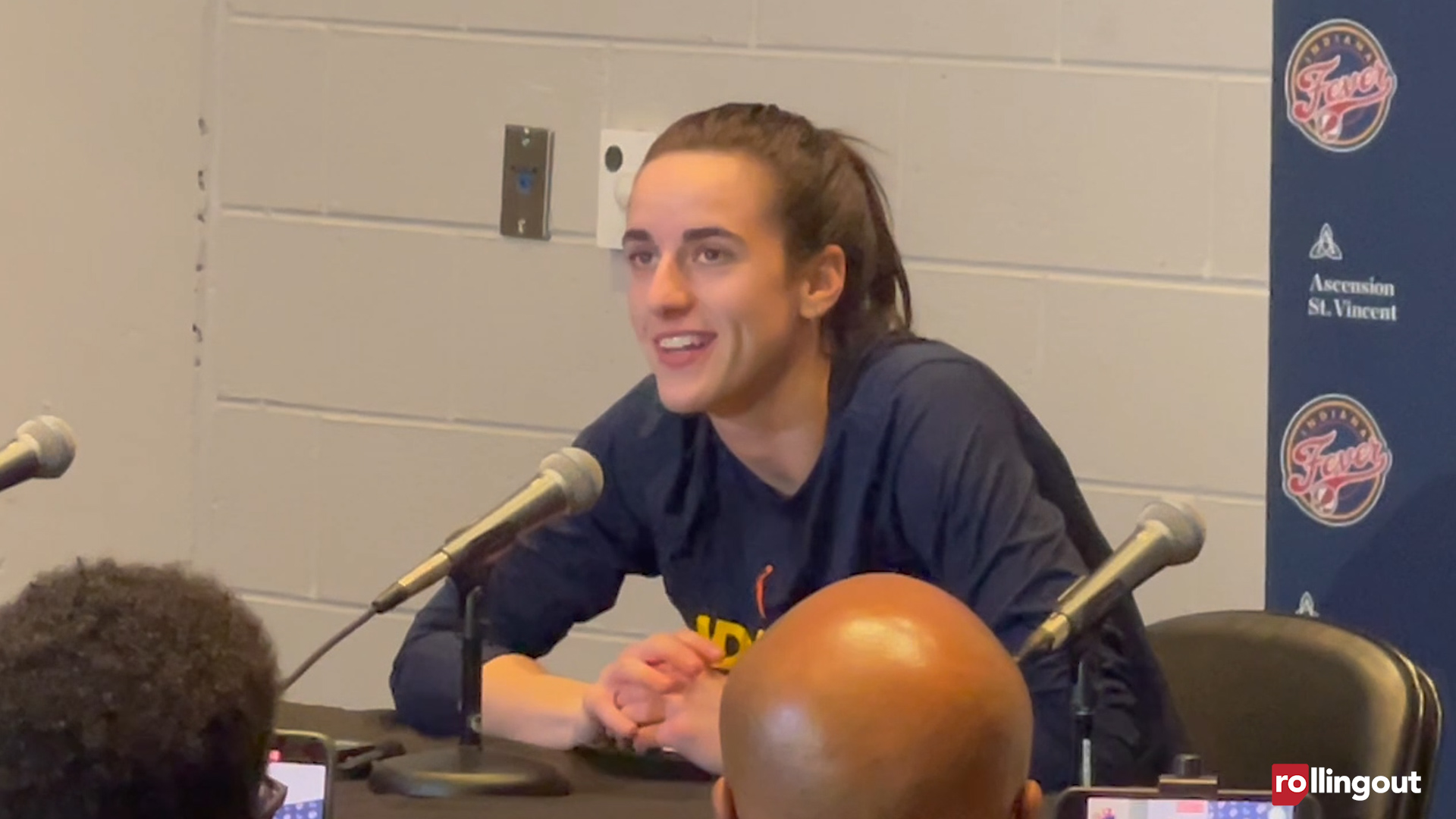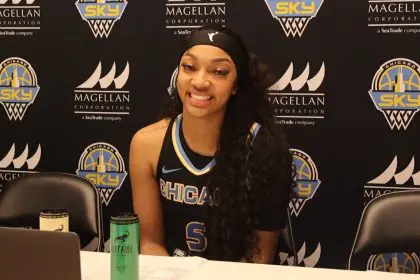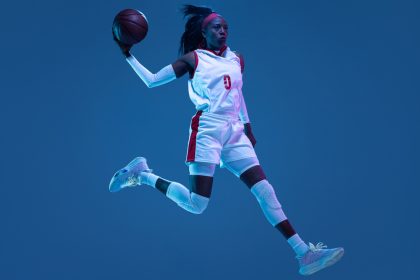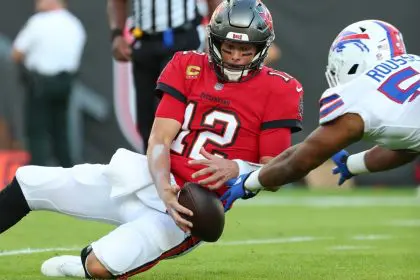One player getting injured shouldn’t be able to single-handedly destroy an entire professional sports league’s television ratings, but that’s exactly what happened when Caitlin Clark went down with a quad strain during training camp. The numbers are so devastating that they expose uncomfortable truths about the WNBA’s current state and its almost total dependence on one superstar to drive national interest.
We’re not talking about a modest dip in viewership or a temporary ratings softening that might be expected when a popular player gets sidelined. This is a catastrophic 55-percent collapse in nationally televised game ratings that transforms the WNBA from appointment television into background noise that most people simply ignore.
The scale of this ratings disaster reveals just how precarious the WNBA’s recent success has been and raises serious questions about whether the league has built sustainable interest or simply created a Caitlin Clark show that falls apart the moment she’s not available to perform.
The numbers that should terrify league executives
Before Caitlin Clark’s injury, WNBA games were averaging 1.8 million viewers, which represented the kind of mainstream success that the league had been chasing for decades. Those numbers put women’s basketball in legitimate competition with other major sports programming and validated all the investment and promotion that had been poured into building the league’s profile.
But when Clark went down, those 1.8 million viewers didn’t just decrease slightly, they collapsed to less than 850,000, representing a viewing audience that’s less than half of what the league was attracting just weeks before. That’s not gradual decline or seasonal fluctuation, that’s a cliff-dive that suggests viewers were tuning in specifically for one player rather than developing genuine interest in women’s professional basketball.
Indiana Fever games specifically saw a 53-percent ratings drop, which might actually be less severe than expected given that Clark is their biggest star. The fact that nationally televised games overall dropped 55% shows that Clark’s absence hurt viewership even for games that didn’t involve her team, suggesting that her presence was driving interest in the entire league rather than just her specific matchups.
These numbers represent the difference between the WNBA being a mainstream sports entertainment option and being a niche product that struggles to compete with other programming choices. When you lose more than half your audience because one player gets injured, it reveals fundamental fragility in your viewer base and business model.
The superstar dependency that nobody wants to admit
What makes these ratings drops so concerning is how they expose the WNBA’s dangerous reliance on individual star power rather than sustainable fan engagement with the sport itself. Healthy sports leagues can weather star injuries because their audiences are invested in teams, rivalries, storylines, and the overall competitive landscape.
The Caitlin Clark ratings collapse suggests that much of the WNBA’s recent viewership growth was driven by curiosity about one particular player rather than genuine conversion to women’s basketball fandom. When those casual viewers discovered that the player they were interested in wasn’t available, they simply stopped watching rather than developing interest in other players or teams.
This dependency creates a precarious situation where the league’s television success essentially depends on the health and availability of a single athlete. No major professional sports league should find itself in a position where one player’s injury can cut their audience in half, yet that’s exactly where the WNBA finds itself.
The situation also raises questions about how the league has been marketed and promoted. If the focus has been too heavily on Clark as an individual attraction rather than building appreciation for women’s basketball as a whole, it might have created exactly the kind of viewer dependency that we’re seeing play out in these ratings numbers.
The perfect storm that made everything worse
While Caitlin Clark’s absence is clearly the primary factor driving the ratings collapse, the broader sports landscape has created additional challenges that compound the WNBA’s viewership problems. The NBA Finals, Stanley Cup Final, and French Open are all competing for sports fans’ attention during the same period when Clark has been sidelined.
Under normal circumstances, established sports leagues can maintain their audiences even when competing against major events because their fans are genuinely committed to following their teams and players. The fact that WNBA viewership has collapsed so dramatically during this competitive period suggests that much of their audience was casual rather than committed.
The injury to another highly anticipated rookie, Paige Bueckers, during the same timeframe as Clark’s absence has created a double blow to the league’s star power and marketing appeal. Losing two of the most recognizable young players simultaneously has eliminated much of the individual personality-driven storylines that were helping to attract viewers.
This perfect storm scenario reveals how dependent the WNBA has become on having the right combination of available stars, favorable scheduling, and limited competition from other sports. When any of those factors shifts unfavorably, the impact on viewership is dramatic and immediate.
The recovery timeline that has everyone worried
Six games into Caitlin Clark’s absence, the WNBA is still dealing with the ratings aftermath while anxiously waiting for news about her return timeline. The fact that she’s begun practicing in limited capacity provides some hope, but the lack of a clear return date creates ongoing uncertainty for both the league and television partners.
Every additional game that Clark misses represents continued ratings struggles and missed opportunities to rebuild the viewership momentum that the league had been enjoying. Television networks and advertisers who had been excited about the WNBA’s growth trajectory are now dealing with audiences that are dramatically smaller than what they had been expecting.
The recovery process also raises questions about how quickly viewership will return when Clark does come back. Will viewers who stopped watching during her absence immediately return, or will the league need to rebuild audience interest from scratch? The answers to these questions will determine whether this injury represents a temporary setback or a more permanent blow to the WNBA’s mainstream appeal.
The longer Clark remains sidelined, the more risk there is that casual viewers will develop viewing habits that don’t include WNBA games, making it more difficult to recapture their attention even when she returns to action.
What this reveals about women’s sports marketing
The Caitlin Clark ratings disaster exposes fundamental challenges in how women’s sports are marketed and promoted to mainstream audiences. The focus on individual star power rather than team rivalries and competitive storylines might create short-term viewer interest but doesn’t build the sustainable fan bases that can weather player injuries or departures.
Successful sports leagues typically develop multiple storylines, rivalries, and star attractions that can maintain audience interest even when specific players are unavailable. The WNBA’s dependence on Clark suggests that this diversification hasn’t happened effectively, leaving the league vulnerable to exactly the kind of ratings collapse we’re currently witnessing.
The situation also raises questions about whether women’s sports can successfully build mainstream audiences without relying heavily on individual personalities and narratives. While star power is important in all sports, the degree of dependency that the WNBA appears to have on Clark suggests an imbalance that creates significant business risk.
Moving forward, the league will need to find ways to develop multiple attractions and storylines that can sustain viewer interest regardless of which specific players are available on any given night. This might require different marketing approaches and promotional strategies that emphasize the competitive aspects of women’s basketball rather than just individual star appeal.
The long-term implications for league sustainability
The ratings collapse during Caitlin Clark’s absence raises serious questions about the WNBA’s long-term sustainability and growth trajectory. If the league’s recent success was built primarily on one player’s appeal rather than genuine development of women’s basketball interest, it suggests that the foundation for continued growth might be less solid than anyone realized.
Television networks and corporate sponsors who had been increasing their investments in women’s basketball based on recent viewership trends might reconsider those commitments if they conclude that the audience was primarily interested in one specific player rather than the sport itself. That kind of reassessment could affect future broadcast deals and marketing partnerships.
The situation also creates pressure on the WNBA to accelerate development of other marketable stars and compelling storylines that can attract viewers independently of Clark’s availability. This might require changes in how the league promotes its players and markets its games to create more diverse sources of viewer interest.
Perhaps most importantly, the ratings disaster reveals the need for more sustainable audience development strategies that create genuine fans of women’s basketball rather than just casual observers of individual players. Building that kind of deeper engagement requires long-term commitment to education, promotion, and community building that goes beyond star-driven marketing campaigns.
The wake-up call that nobody wanted
Clark’s injury has provided the WNBA with a harsh but necessary reality check about the sustainability of its recent success and the depth of its viewer engagement. The 55-percent ratings drop exposes dangerous dependence on individual star power and reveals the fragility of audience interest that seemed so promising just weeks ago.
While Clark’s eventual return will likely restore much of the lost viewership, the league now understands that its recent growth was built on shakier foundations than anyone realized. The challenge moving forward will be using this knowledge to develop more sustainable approaches to audience building that can weather individual player injuries and departures.
The ratings collapse serves as both a warning and an opportunity for the WNBA to reassess its marketing strategies and audience development approaches. The league’s response to this crisis could determine whether women’s professional basketball becomes a truly sustainable mainstream entertainment option or remains dependent on the health and availability of individual superstars.


















